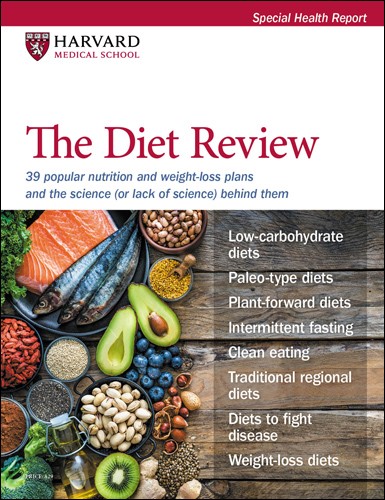The best ways to identify processed foods
Even healthy-looking foods can be ultra-processed and increase the risks for inflammation and disease. How can you tell?
- Reviewed by Anthony L. Komaroff, MD, Editor in Chief, Harvard Health Letter; Editorial Advisory Board Member, Harvard Health Publishing

Keeping overly processed foods out of your diet is an important way to help stave off chronic inflammation — the persistent activation of the immune system — and many chronic diseases linked to inflammation. Avoidance becomes challenging, however, when you start thinking about what you should count as a processed food. After all, some processing is actually beneficial to health.
"Done well, some processing can preserve the nutritional value of foods or make them more available — such as during the winter, when we don't have local fruits and vegetables. Processing can also make foods safer — just think of pasteurized milk, which kills harmful germs. And processes like fermentation can sometimes improve the healthfulness of foods, like yogurt," says Dr. Walter Willett, professor of epidemiology and nutrition at the Harvard T.H. Chan School of Public Health.
So when is processing harmful, and which processed foods should you avoid? Here's what you need to know.
What are processed foods?
Processed foods are those that have been changed from their original form in some way. It could be that they've simply been chopped and frozen (like vegetables) or that inedible parts (like the shells from nuts) have been removed from them. That type of change is considered a minimal amount of processing.
At the next level, processed foods have a few added ingredients. Examples of these foods include a three-ingredient cracker (with wheat, oil, and salt), freshly baked bread, or canned vegetables packed in water and salt.
Foods with even more processing are called "ultra-processed" foods. "Ultra-processing usually means that the original foods are not recognizable, and they include additives such as preservatives, oil, sugar, salt, coloring, and flavoring. It's what we mean by junk food," Dr. Willett explains.
Examples of ultra-processed foods include hot dogs and deli meat (see "The dangers of processed meat"), cheese puffs, doughnuts, frozen pizza, white bread, cookies, microwaveable dinners, and soda.
The dangers of processed meatProcessed meats are among the least healthy foods you can eat. Examples include bacon, sausage, ham, hot dogs, salami, and deli meat (such as deli roast beef or turkey). These foods contain high amounts of salt, unhealthy saturated fat, nitrates and nitrites, and other chemical additives (coloring, flavoring, and preservatives). Eating lots of processed meat is associated with increased risks for cardiovascular disease as well as colorectal cancer. For example, a 2019 International Journal of Epidemiology study of almost 500,000 people found that those who ate red or processed meat four or more times per week had a 20% higher risk for developing colorectal cancer during the five-year follow-up period compared with people who ate red or processed meat less than twice a week. The International Agency for Research on Cancer, part of the World Health Organization, classifies processed meat as carcinogenic (having the potential to cause cancer) to humans for colorectal cancer. |
Health risks
When experts warn that processed foods are bad for us, they're usually referring to ultra-processed foods. These foods pose health risks for several reasons.
"Processing often strips foods of their nutritional value — such as refining whole grains," Dr. Willett says. "Processing can also create harmful molecules, such as trans fat, or add ingredients like salt and sugar in large amounts that are harmful."
Eating lots of ultra-processed foods is associated with increased risks for chronic inflammation, many chronic diseases (such as heart disease, diabetes, inflammatory bowel disease, obesity, and cancer), and early death.
For example, a 2019 BMJ study of more than 105,000 people followed for five years found that for every 10% increase in the amount of ultra-processed foods participants ate, their risk of heart attack or stroke went up by 12%. And another 2019 BMJ study, this one involving almost 20,000 people followed for 10 years on average, found that participants who ate more than four servings of ultra-processed foods per day had a 62% higher risk of dying during the study (from any cause) compared with those who ate two servings per day.
Finding ultra-processed foods
Generally speaking, it's easy to spot ultra-processed foods — they're the ones with long ingredient lists. They're found on store shelves or in freezers, refrigerated sections, delis, or bakeries. Common types of ultra-processed foods include packaged, ready-to-eat entr'es or meals; prepared side dishes; snacks; or sweets of any kind (such as cookies and cakes).
But sometimes ultra-processed foods appear to be healthy when they're not. That is particularly true of ultra-processed versions of fruit-flavored yogurts, refrigerated soups, refrigerated pastas (such as chicken tortellini), granola bars, juices, breakfast cereals, frozen yogurt, low-fat salad dressings, condiments, butter substitutes, low-salt crackers, or nut butters.
How can you tell if something is ultra-processed? It's just a matter of reading the ingredient list on a food's label. If you see numerous ingredients, including chemicals and any words you don't recognize, that food is probably ultra-processed. Put it back and look for something with the shortest list of ingredients possible.
Is it ever okay to cheat?
It may seem hard to avoid ultra-processed foods, especially if you're on the go or if you'd simply like to indulge in a ready-to-eat muffin, a deli sandwich, or a homemade ragù with chicken sausage. Is it ever okay to break the rules if you're generally healthy?
"Almost anything is okay if you break the rules just once a month," Dr. Willett says. "But keep an eye on the other ingredients. For example, the ragù could be fine if the salt is kept below 200 milligrams [mg] per serving."
Other guidelines to follow: Keep your total daily salt intake below 2,300 mg per day, unless your doctor advises a lower threshold. Limit saturated fat to no more than 10% of your daily calories. And keep added sugars to no more than 24 grams per day for women and 36 grams per day for men.
As much as possible, eat whole, unprocessed foods as part of a plant-based diet (vegetables, legumes, fruits, whole grains, nuts, and seeds).
And remember: "Just because foods are unprocessed, it does not mean that they're healthy," Dr. Willett points out. "A diet based on red meat, milk, and potatoes is unprocessed but far from optimal."
Image: © vgajic/Getty Images
About the Author

Heidi Godman, Executive Editor, Harvard Health Letter
About the Reviewer

Anthony L. Komaroff, MD, Editor in Chief, Harvard Health Letter; Editorial Advisory Board Member, Harvard Health Publishing
Disclaimer:
As a service to our readers, Harvard Health Publishing provides access to our library of archived content. Please note the date of last review or update on all articles.
No content on this site, regardless of date, should ever be used as a substitute for direct medical advice from your doctor or other qualified clinician.
















